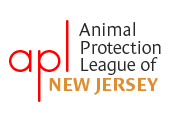Click here to go back.
THE NIH AND EPA
TESTING TOXICITY WITH ROBOTS AND HUMAN CELLS
In February of 2008, The National Institutes of Health (NIH) and the Environmental Protection Agency (EPA) signed an agreement to use robotics and new non-animal based technology to test for chemical safety:
“Top officials from the U.S. National Institutes of Health (NIH) and Environmental Protection Agency (EPA) Thursday announced a five-year deal promising to share technology, information and other resources that will improve the toxicity testing of chemical compounds used in food, medicine and other products using robots rather than lab animals.” Scientific American Feb. 15 2008
“This new, trans-agency collaboration is anticipated to generate data more relevant to humans; expand the number of chemicals that are tested; and reduce the time, money and number of animals involved in testing.” NIH News Release, Feb. 14, 2008
ANIMAL TOXICITY TESTING: "expensive," "inefficient"Robert Kavlock, Director of the National Center for Computational Toxicology at EPA, stated, regarding animal toxicity testing, “...that it also is expensive, inefficient and is not always an accurate indicator of how a substance will affect humans.” Scientific American, Feb. 15 2008
Dr. Francis Collins, Director of The National Human Genome Research Institute, was asked to describe why the new testing methods were preferable to using animals. Speaking about the use of animals for toxicity testing, he said:
"...it is clearly quite expensive, it is time consuming, it uses animals in large numbers and it doesn't always predict which chemicals would be harmful to humans."
“It's slow, it's expensive and its precise predictive ability has often-turned out not to be as good as we would want. There are differences between species. We are not rats and we are not even other primates. And so the desire here is to try to see if we could do better.” NIH and EPA press teleconference, February 14, 2008
THE BETTER WAY: Human Cells and RoboticsThis new direction will bring together “... experts from the NIH National Toxicology Program (NTP), high-speed, automated screening robots at the NIH Chemical Genomics Center and computational toxicology capabilities available at the EPA...”
"The news here is the capacity to test many thousands of compounds, something we haven't had until this collaboration," Samuel Wilson, acting director of the NIH National Institute of Environmental Health Sciences and NTP, said at the press conference.
“The new research model would allow scientists to test 100,000 compounds in 1,500 different concentrations in about two days compared with years if the testing was done on animals."
"This sort of "high-throughput" testing will enable researchers to generate more data relevant to humans, and at the same time reduce the amount of animal experimentation. The cross-species extrapolation from animals to humans is "not always as precise as it should be," Wilson said.
"This collaboration is a milestone because it gives us the ability to apply a new generation of approaches to determining toxicities." Scientific American, Feb. 15 2008
ANIMAL REPLACEMENT: For the Benefit of Human Safety"This research collaboration has the potential to make crucial discoveries that will protect the public health by identifying and understanding chemical toxicants to which people are exposed." Elias A. Zerhouni, Director of NIH. NIH News Release, Feb. 14, 2008







